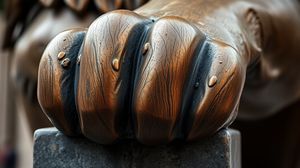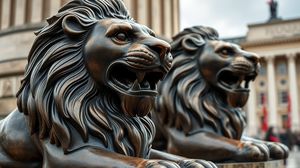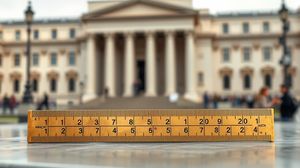
The Captain James Cook Statue on The Mall in London stands as a tribute to one of history's most renowned British explorers. Unveiled in 1914, the bronze statue was designed by the architect Sir Thomas Brock, who was also responsible for many notable sculptures including the Victoria Memorial. The statue commemorates Captain James Cook's exceptional voyages that contributed significantly to the geographic and scientific knowledge of the 18th century.
Captain James Cook, a naval captain and cartographer, is best known for his three voyages to the Pacific Ocean, which included mapping the coastlines of New Zealand, Australia, and various Pacific islands. His efforts greatly expanded European understanding of the Pacific region as well as led to cultural exchanges, though his expeditions were not free from controversy regarding colonial impacts.
A curious fact about the statue is that it faces the direction of Admiralty Arch and Buckingham Palace, symbolizing Cook's importance to both British naval history and the British Empire. However, those visiting the statue may notice there is a distinct lack of nautical symbols directly on the statue itself, despite Cook's extensive maritime legacy.
The statue captures Cook in a thoughtful pose, with one hand holding a map. The map signifies Cook's role not only as an explorer but also as a skilled navigator and cartographer who charted many regions across the globe. This aspect of the statue often intrigues visitors who are fascinated by historical map-making.
Cook's statue is strategically placed along The Mall, a ceremonial route in London that often hosts royal processions and parades. The location underscores the nation's celebration of Cook's contributions and aligns him with other prominent historical figures commemorated in the area, offering an educational and historically rich experience for visitors.

Making the Most of Your Visit:
If you're interested in Captain Cook's voyages, bring along or download a detailed map of his voyages. Standing by the statue with a map in hand offers a unique way to visualize his travels and see the incredible distances he covered.
Visit during the early mornings or later in the afternoon when The Mall is quieter. It's a perfect spot for reflection without the heavy foot traffic and gives you the space to appreciate the statue's detail and significance.
Check out the orientation of the statue. Cook faces Admiralty Arch, which can lead to some great photo opportunities, capturing both the historical significance of the statue and the architectural beauty of the Arch in the background.
The statue isn't adorned with nautical symbols, which surprises many. Use this opportunity to imagine the different elements that could symbolize Cook's maritime career, perhaps turning it into a little discussion point if you're visiting with family or friends.
Keep an eye out for ceremonial events along The Mall. If you're visiting on a day with no official events scheduled, you might find yourself near the venue of a royal procession or parade, enriching the historical experience even more.

Visiting Times & Costs:
The Captain James Cook Statue on The Mall is open to the public at all times as it is an outdoor public monument. There is no entrance fee to view or access the statue, making it a cost-free attraction.
Accessibility to the statue is generally good, as The Mall is wheelchair accessible. However, it is always advisable for those with specific accessibility needs to check the conditions on the day of their visit, as temporary events or maintenance work along The Mall could impact access.

Address & Map:

Nearby:























